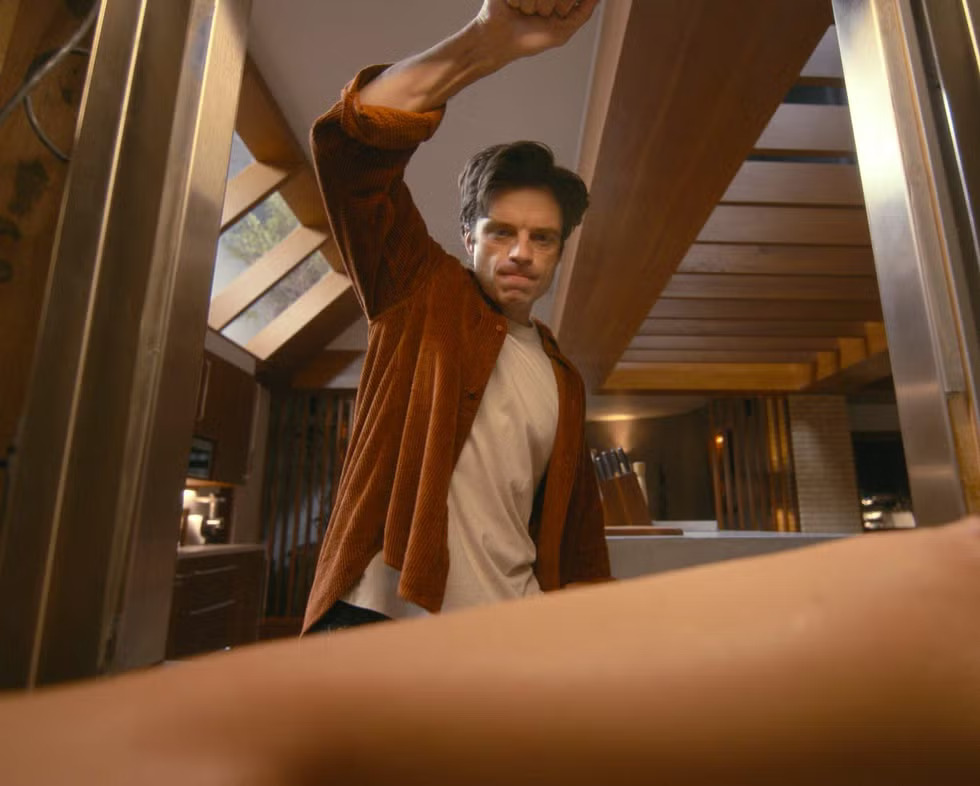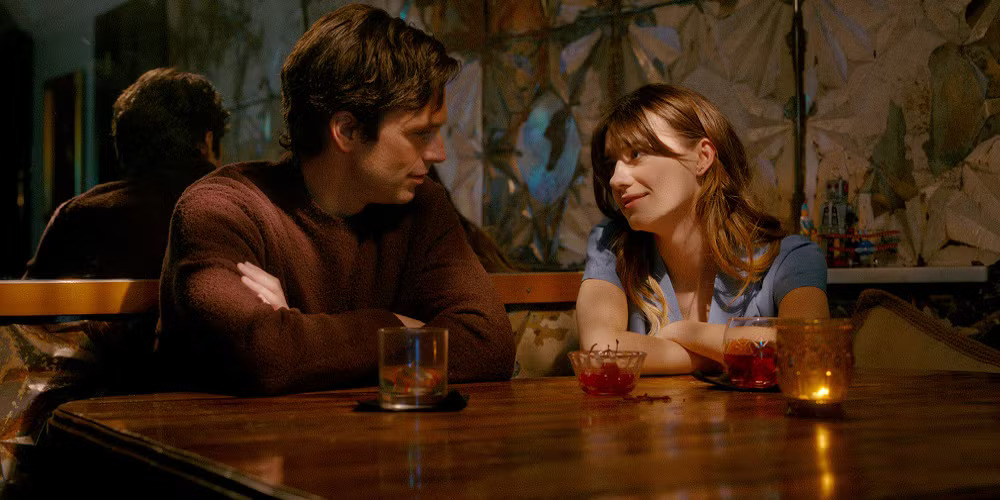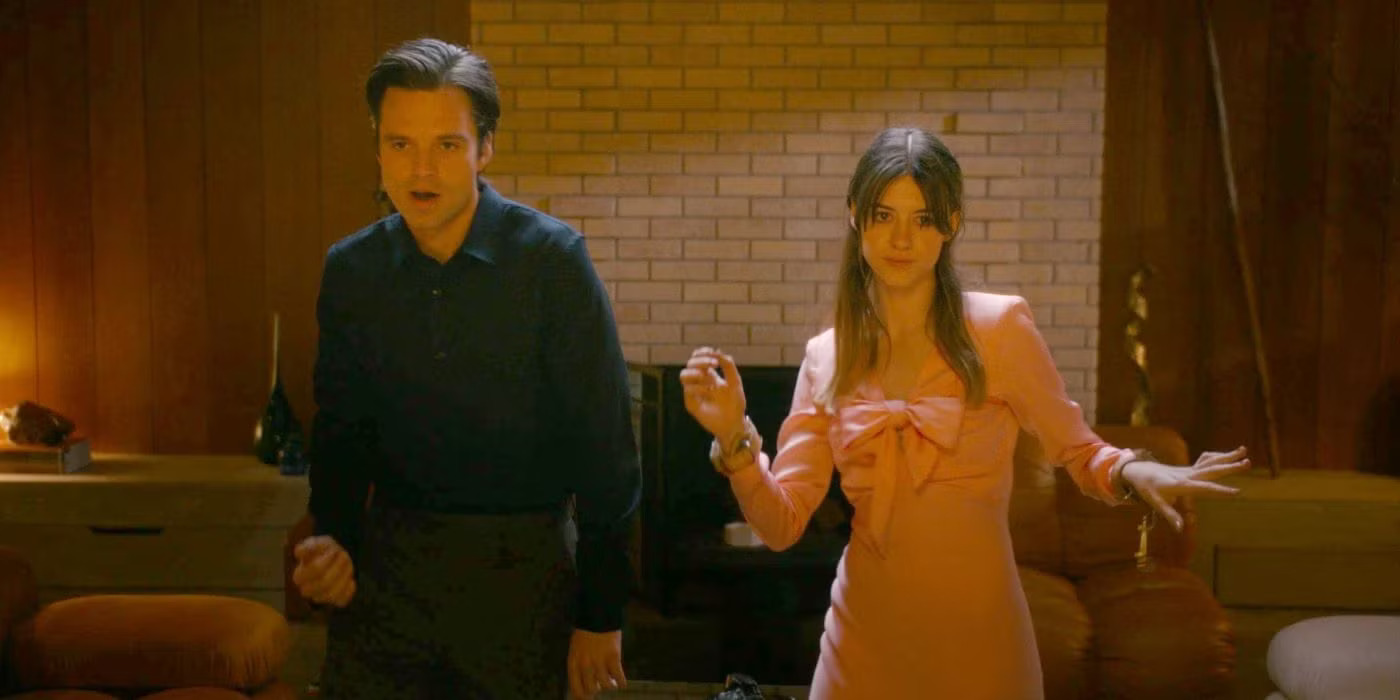“Fresh” is a horror-comedy that examines the dark side of modern dating, particularly the risks women face in a world where trust is often misplaced. The film follows Noa (Daisy Edgar-Jones), a young woman disillusioned with online dating after enduring a series of disappointing encounters. The story begins with Noa on a disastrous date where her suitor belittles a waiter, insults her appearance, and even steals food that she paid for.
Frustrated, she vents to her best friend Mollie (Jonica T. Gibbs), who advises her to adopt a “f*ck it” attitude and take more risks in dating. This sets the stage for what follows when Noa meets Steve (Sebastian Stan), a seemingly perfect match who quickly sweeps her off her feet. However, their whirlwind romance soon takes a horrifying turn.
Steve initially appears to be everything Noa has been looking for—charming, witty, and sincere. Their chemistry leads her to let her guard down and accept an invitation to a romantic getaway. However, once they arrive at his remote home, she realizes she has been drugged and imprisoned.
Noa soon discovers that Steve is a cannibal who abducts women, keeps them alive, and harvests their body parts to sell as high-end meat to wealthy clients. She is not alone in captivity—another woman, Penny (Andrea Bang), is being held in a cell next to hers. Noa must figure out how to escape before she meets a gruesome fate.
Noa quickly understands that brute force will not be enough to overpower Steve. Instead, she employs cunning psychological tactics, mirroring the same manipulation he uses on his victims. She pretends to develop feelings for him, playing into his ego and lulling him into a false sense of security. Steve, believing he has successfully broken her spirit, takes her on a special “date” where he reveals his collection of mementos from previous victims, including Mollie’s phone.
When Steve least expects it, Noa seizes the opportunity—she seduces him and, in a shocking moment of poetic justice, bites off part of his penis. This gives her the chance to break free and rescue Penny and Mollie, turning Steve’s twisted methods against him.

Cannibalism as Metaphor Examining Objectification Power and Betrayal in Fresh
One of the most chilling aspects of “Fresh” is how it uses literal cannibalism as a metaphor for the objectification of women. Steve’s “business” of selling female body parts is an exaggerated but effective commentary on how women are often treated as commodities in real life. The film critiques the way men dehumanize women, reducing them to their “most desirable” features. Steve’s act of selling Noa’s body parts, particularly her buttocks—a feature often fetishized in media—further reinforces this unsettling theme.
Steve carefully selects his victims, targeting women with weak or nonexistent family ties, ensuring that no one will notice when they disappear. Noa unwittingly reveals to him that her father is deceased and she is estranged from her mother, marking her as an ideal candidate.
This mirrors real-life cases where predators seek out individuals with minimal support systems, making them easier to exploit. Penny, another victim, was similarly chosen because no one would come looking for her. Steve ensures that his victims remain isolated, preventing them from forming bonds with others who could expose his operation.
A shocking revelation in the film is that Steve’s wife, Ann (Charlotte Le Bon), is complicit in his crimes. She, too, is a victim, as evidenced by her missing leg, implying that she was once in Noa’s position. However, instead of escaping, Ann chooses to align herself with Steve, representing a tragic case of Stockholm Syndrome.
Screenwriter Lauryn Kahn notes that Ann embodies women who betray other women to maintain their own survival. Ann’s complicity adds another layer of horror to the story, as it demonstrates how deeply ingrained power dynamics can corrupt even those who were once victims themselves.
The film subtly hints that Steve is merely a cog in a much larger network of male cannibals. In a mid-credits scene, wealthy men are seen dining on human meat, some clothed in lavish suits while others sit nude, implying a depraved mix of power, lust, and violence. This haunting scene reinforces the idea that the exploitation of women extends far beyond one villain—it is a systemic issue deeply embedded in patriarchal structures.

Subverting Horror Tropes Female Solidarity and Survival in Fresh
Unlike traditional horror movies where a male hero rescues the final girl, “Fresh” subverts the trope by having Noa and Mollie rely on each other for survival. Paul (Dayo Okeniyi), Mollie’s friend, initially attempts to help but ultimately flees when he senses danger. This underscores a crucial theme: women can only count on themselves and each other in a world that often dismisses their suffering. The film celebrates female solidarity as Noa, Mollie, and Penny work together to defeat Steve and escape his nightmarish lair.
While “Fresh” was widely praised for its originality and feminist subtext, some critics felt that the final act lost momentum. The claustrophobic tension of Noa’s captivity was masterfully executed, but some viewers found that the climax, which takes place outside the house, lacked the same intensity. Nonetheless, the film’s central message remained powerful, and its subversive take on horror conventions was widely appreciated.
Although no official sequel has been announced, Daisy Edgar-Jones has expressed interest in reprising her role. She has suggested that a follow-up film could focus on Noa and Mollie hunting down the remaining members of the cannibal network. While this premise is intriguing, a sequel would face challenges, especially without Sebastian Stan’s magnetic performance. Whether or not “Fresh 2” materializes, the film’s impact as a sharp critique of modern dating and misogyny remains undeniable.
“Fresh” concludes with an eerie reminder that Noa’s ordeal, while horrific, is part of a larger, ongoing struggle. The final scene shows her receiving a text from Chad, the obnoxious man from her earlier date, saying, “You up?” This moment is darkly humorous yet chilling—it suggests that while Noa escaped the immediate horror of Steve’s cannibalistic plot, she remains trapped in the everyday horrors of dating culture, where predatory behavior is all too common. “Fresh” ultimately serves as both a gripping horror film and a thought-provoking social commentary, leaving audiences unsettled long after the credits roll.



